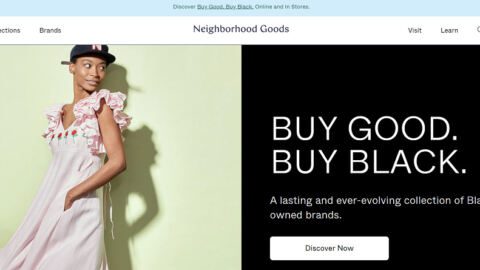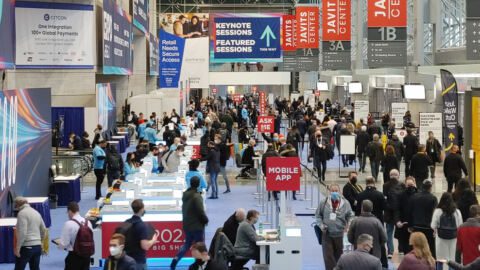All kinds of businesses have been rocked by the digital revolution: news, music, media, transportation — and most definitely retail. But what exactly has made it so tough for some retailers to adapt to the changed landscape?
Harvard Business School professor Bharat Anand has pinpointed some of the key reasons why traditional businesses, including retail, have found it so difficult to find their footing in a digital-first world. Too many companies fall into what Anand calls the “Content Trap.” In his book of the same name, Anand wrote that rather than focusing on the new world of connections that digital enables, companies remain fixated on the content they produce: a news story, a song, a taxi ride — and in the case of retail, the product they sell.
Some retailers have found their own ways out of the trap: Home Depot by emphasizing curation, advice and inspiration in its stores, and Best Buy by adding strong service components to its product offerings with its Geek Squad.
In this exclusive Q&A with Retail TouchPoints, Anand shares why so many retailers fall into the Content Trap — and what they can do to extricate themselves.
RTP: How do the elements of the Content Trap translate to retail?
Bharat Anand: In the book, “content” is a metaphor for “product.” I drew examples from the information industry, where content is the product. The important point here is the idea of user connections. When digital came along, its power seemed to be about creating reach. Companies could reach hundreds of thousands of people in the old analog world, but digital multiplied that capability. That’s an extremely natural conclusion to draw, and it’s the way most organizations still focus on digital.
But what was different about digital technology versus, for example, television and radio, was that it did more than increase reach; it changed the hub-to-spoke model. Traditionally a company was the hub, producing content (or a product), and distributing it to the spokes — viewers or customers. Digital increased the number of spokes, but now a spoke could interact back with the hub. They could be part of creating content or a product.
Another important insight is that the spokes could now talk to each other. That’s what many organizations still miss: the user connections — user-to-company, or user-to-user.
In my job as a member of a university faculty, think of it as the shift from a lecture mode to a case-based discussion mode. Lecturing is a broadcast model. In the case-based discussion model, however, the lecturer is essentially giving up that role as the “broadcaster” and treating the students as co-creators. Then it becomes about facilitating conversation in a smart way.
RTP: But these aspects of digital have been around for a while now. Why is it still so tough for companies to adapt?
Anand: Some of it is the DNA of these companies. Their organizational success comes from doing stuff really well. So if we’re a great newspaper, it’s from producing great content. If we’re a great retailer, it’s from having great products and an amazing retail store experience. It would seem the natural way to translate that into digital is to bring that great stuff to a much bigger audience, but it actually involves shifting the mindset. The real role is curating, or serving as a platform, and recognizing that other people are creating as well. So the original reasons for success in the traditional world are why it’s hard to get your hands around the realities of a spoke-to-spoke world.
RTP: Are there some retailers that have been able to avoid the Content Trap?
Anand: Some were already in a better position than others. For example, Home Depot: the whole idea of going there was very different than just “to buy stuff.” People were going there for advice, service, curation — they wanted to see what their kitchen would look like when the remodeling was done. They’re in much better shape than retailers that are simply selling product, because their whole idea is predicated on the shopper experience.
Another example is Best Buy, which migrated from being the big box retailer for selling product into a place where you could get advice, expertise and fantastic service. And the Geek Squad extends that service element beyond the store. Now as you start thinking about IoT, which is the next phase of digital, you see Best Buy positioning itself at the center of that trend by connecting all the products in your home. Their message is “We can be the folks that install, maintain and service all of these connected products.”
RTP: You also talk about the problem of missing product connections. How does that apply to retail?
Anand: In retail, part of the problem is that companies are still so product-focused versus customer-focused. Because all of their success comes from selling product, anything that looks like it might undermine that model is seen as a threat. For example, when digital music came along, sales of physical CDs declined. But what else happened? Live concerts became more popular, and ticket prices for them went up. Concerts had been priced low because essentially they were advertising for people to buy CDs. Now, the digital music is the advertising for the concerts.
When people see new technologies coming along, they look at them as being substitutive for the original analog or physical product. But in many cases the substitutes turn out to be complements. It’s not that behavior suddenly shifts from one platform to another; often we find that the new platform can enhance the old platform.
In retail, if I looked at e-Commerce as simply fulfilling a transaction, that would be substitutive of the store experience. However, if e-Commerce is the basis for a multiplatform experience, or allows a company to do more direct-to-consumer marketing, or to interact with a brand by sharing stories, or retailers are using the online channel to drive people to the physical store, e-Commerce is a complement that enhances the existing platform.
RTP: What’s your advice for retailers to stay out of the Content Trap?
Anand: Some of it is about mindset. Think about digital and the Internet as really offering an opportunity for creating connections. You’re not just selling but listening, and making the shopping experience interactive. That could be about trying on a shirt virtually as well as creating communities and conversations. The moment you look at it through the lens of connectedness, it throws up many new opportunities.
The second is to look at the new platforms not as stand-alone technologies that are substitutes for existing things, but as complements. The whole debate about which will “win,” e-Commerce of physical stores, doesn’t make sense. Customers don’t think that way, younger customers particularly. They are using all these platforms, and they want a fantastic experience that integrates all of them. Put yourself into the shoes of the customer.













